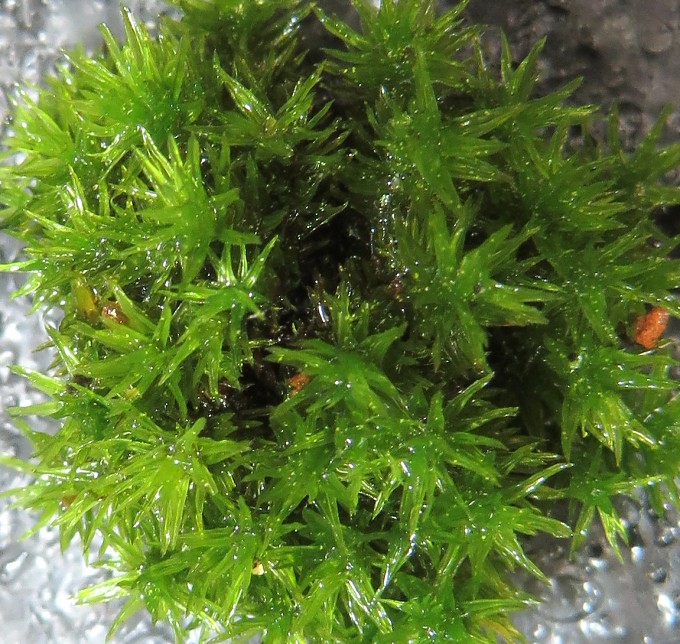Yes, I'm into bugs again: dragonflies and damselflies. According to Smithsonian Magazine, dragonflies were some of the first winged insects to evolve, some 300 million years ago. Modern dragonflies have wingspans of only two to five inches, but fossil dragonflies have been found with wingspans of up to two feet. I'm thinking I wouldn't have liked them then. There are distinct differences between dragonflies and damselflies, by the way. I only learned the difference a few years ago.

Believe it or not, there are several books and websites specific to the topic of dragonflies and damselflies. I don't know why I'm surprised … there are books and websites out there on every topic imaginable. Though I appreciate the grace, alacrity and sheer beauty of these critters, I never really thought someone could dedicate their life to studying and photographing them. I figure just dedicating a whole blog post to them is pretty bizarre. Moving on … The basic differences, I learned, were that dragonflies are stockier, have dissimilar wing pairs and their wings are usually held open or horizontal when at rest. With these criteria, it was pretty easy to tell the two apart. And then, of course, my identification-itis set in.
and websites specific to the topic of dragonflies and damselflies. I don't know why I'm surprised … there are books and websites out there on every topic imaginable. Though I appreciate the grace, alacrity and sheer beauty of these critters, I never really thought someone could dedicate their life to studying and photographing them. I figure just dedicating a whole blog post to them is pretty bizarre. Moving on … The basic differences, I learned, were that dragonflies are stockier, have dissimilar wing pairs and their wings are usually held open or horizontal when at rest. With these criteria, it was pretty easy to tell the two apart. And then, of course, my identification-itis set in.
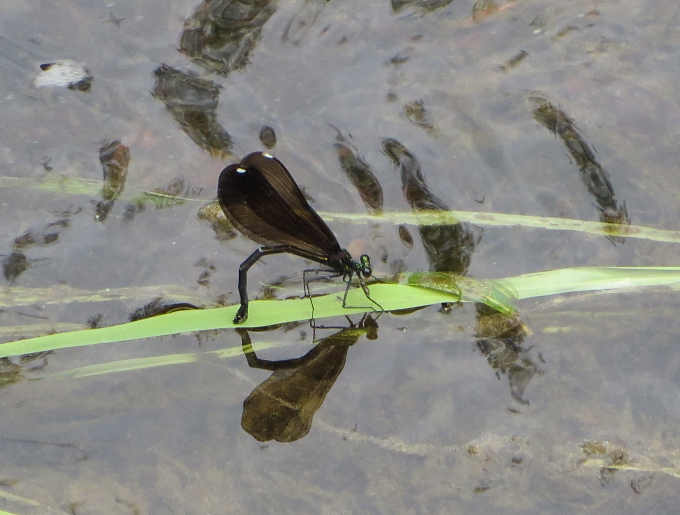
When I was in New England recently and spent so much time at Bird Park, I had a great opportunity to photograph some dragonflies and damselflies. Sometimes they seem to light forever … good photographic subjects. Other times, they're fidgety and flit around so much, photos aren't possible. The grasses along the duck ponds at Bird Park were the best viewing site in early morning and evening. The great thing about digital cameras is you can take a thousand pix and choose only a couple that are the best. Nothing lost.
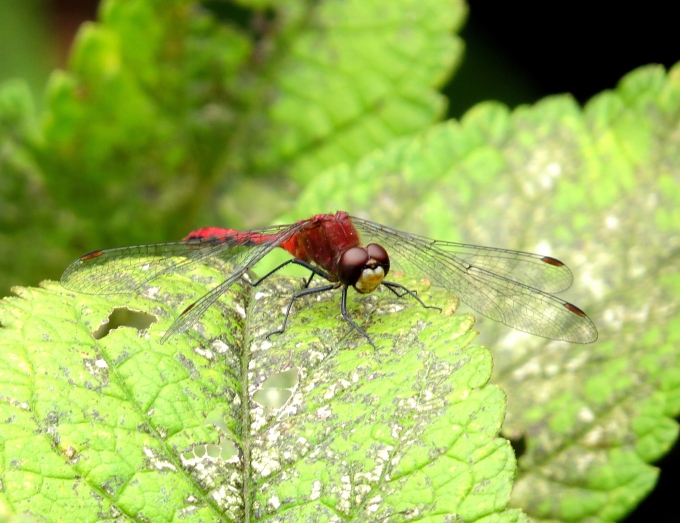
There are more than 5,000 known species of dragonflies, all of which (along with damselflies) belong to the order Odonata, which means “toothed one” in Greek and refers to its serrated teeth. The fact they have teeth is interesting in itself. Dragonflies, though not harmful to man, are predators to other insects. In fact, a single adult dragonfly can eat 30 to 100+ mosquitoes per day. They're expert fliers with the ability to fly straight up and down, hover like a helicopter and even mate in mid-air. If they can’t fly, they’ll starve because they only eat prey they catch while flying.
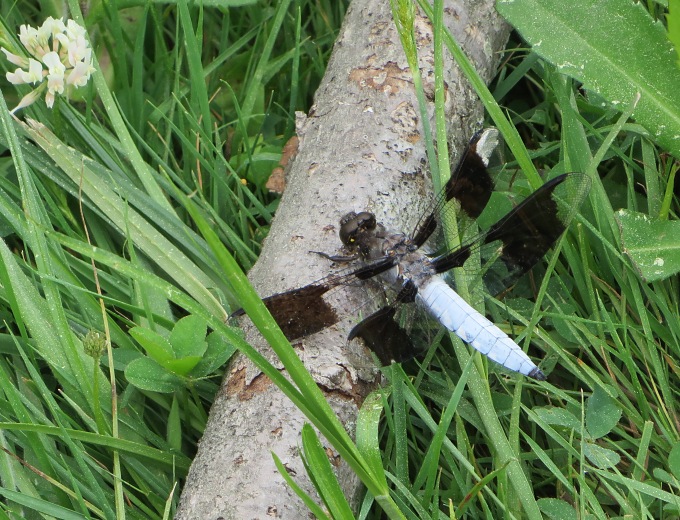
The males are territorial and quite aggressive in both protecting their territory as well as mating. I read a National Geographic article and it sounds as if dragonfly courtship is not very romantic. Males and females, by the way, are many times dimorphic, i.e., they don't look alike. Take the ebony jewelwings, for instance.
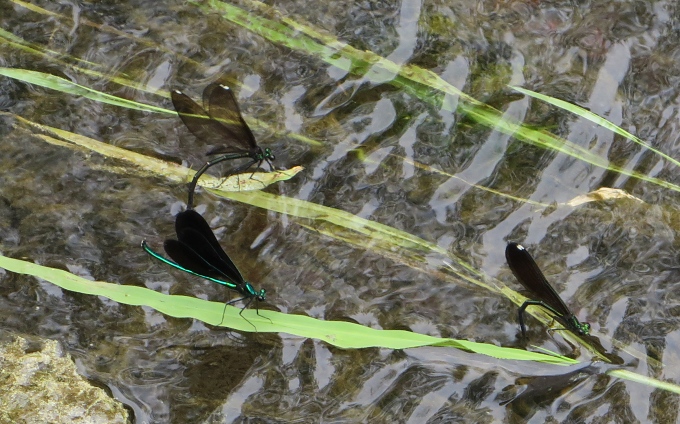
Now that I'm in Las Vegas, you'd think dragonflies would be scarce. In the desert, they are. Here on the east side of town near the Clark County Wetlands Park though, there are scads of them. Once again, early morning and dusk are the best time for viewing, but what a show.

A dragonfly called the globe skinner has the longest migration of any insect—11,000 miles back and forth across the Indian Ocean. We'll be on the lookout for this one when we cross the Indian.
By the way, I used to be afraid of dragonflies … we called them sewing needles or darning needles when I was a kid. The local legend warned that if a dragonfly landed on you, it would sew your lips shut. I'm quite a talker, so you can see that if the myth was true, it really would have affected my style.



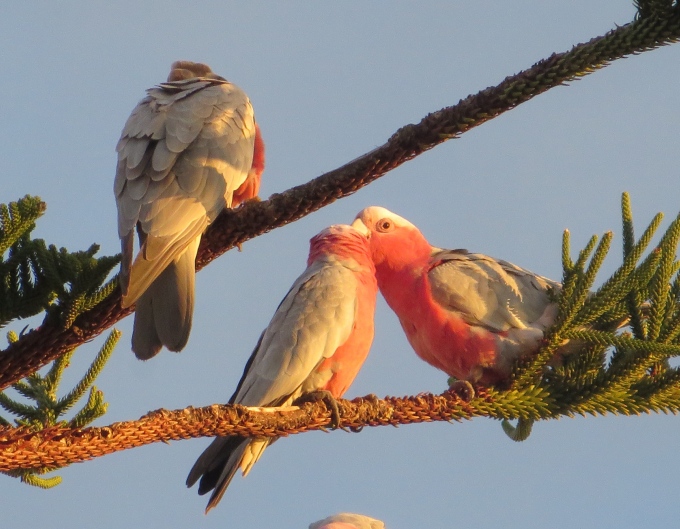




 and websites specific to the topic of dragonflies and damselflies. I don't know why I'm surprised … there are books and websites out there on every topic imaginable. Though I appreciate
and websites specific to the topic of dragonflies and damselflies. I don't know why I'm surprised … there are books and websites out there on every topic imaginable. Though I appreciate 






